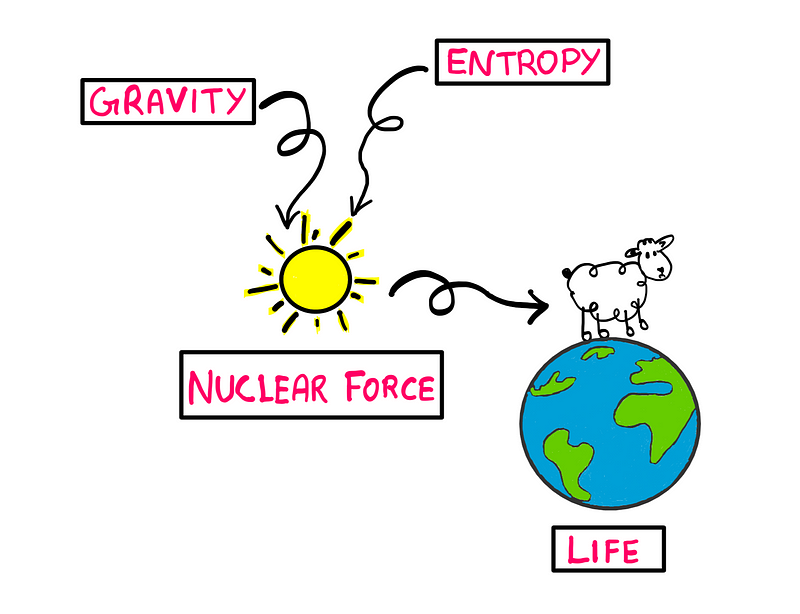The Intriguing Role of Nuclear Forces in Sustaining Life
Written on
Chapter 1: Understanding Our Universe
In my earlier exploration of the interplay between gravity and entropy, I delved into the significant influence of gravity on star formation. Although I briefly mentioned the emergence of the nuclear force during this process, I failed to emphasize its importance. This essay aims to rectify that oversight. Before we delve deeper into the nuclear force, let’s briefly recap what has been discussed in this series.
A Brief Overview
I began with a fundamental inquiry:
“Where did our universe originate?”
The Big Bang emerged as one of the leading explanations. Following this, I investigated the nature of gravity and how it interacts with entropy across the cosmos.
Under typical conditions we experience, energy disperses until a state of equilibrium is achieved. For example, if you place a cup of hot water on a table, after some time, the temperature of the water will likely equal that of its surroundings due to entropy and minimal gravity.
However, what occurs when gravity is significant? This is where gravity's cumulative effect becomes crucial, pressing atoms together and compressing them to the point that atomic nuclei begin to fuse, initiating the nuclear fusion process.
This fusion generates an outward force that counteracts gravitational compression, halting further atom compression. This is where my previous discussion on gravity and entropy concluded. Yet, as I stated earlier, this doesn’t fully acknowledge the nuclear force's critical role.
The Dual Nature of Nuclear Forces
Gravity serves merely as a trigger (or catalyst, more accurately). Once nuclear fusion begins, atomic nuclei merge, creating a more stable arrangement of atoms with lower entropy. A fascinating aspect of this process is that a portion of the nuclei's mass is transformed into heat and photons, as described by Einstein's famous equation (E = mc²).
The remarkable outcome of this event is that the photons emitted increase the surrounding environment's entropy more than the entropy reduction achieved by the fusion occurring at the star's core.
Essentially, while a star reduces entropy within itself, it contributes to an overall increase in entropy in the universe. This dual nature of the nuclear force is truly captivating. But there’s even more to explore!
The Essence of the Nuclear Force
I previously mentioned that nuclear fusion involves the merging of atomic nuclei to form low-entropy structures. The incredible aspect of this process is that it occurs billions of times per second for billions of years! This makes the nuclear force one of the fundamental forces in nature that fuels stars—and ultimately, sustains our existence.

Reflect on this: entropy is prevalent throughout the universe. In the absence of gravity (or under minimal gravitational influence), entropy drives energy to disperse toward equilibrium. Introducing gravity changes this dynamic, causing energy to concentrate in certain areas, leading to a cascade of gravitational compression in massive gas clouds.
At a critical point, the compression becomes so intense that atomic nuclei begin to fuse. Beyond that threshold, gravity takes a secondary role, and for billions of years, it is the nuclear force that maintains the star's core!
Without gravity, the nuclear force would not exist. Conversely, without the nuclear force, the sun would not shine. And without the sun, life as we know it would not exist. This realization is profound!
I invite you to take a moment to reflect on this insight. As you do, consider this intriguing question: Would entropy still persist in the cosmos without gravity, nuclear forces, or similar phenomena?
Chapter 2: The Role of Nuclear Energy in Our Future
This first video, "The Role of Nuclear Energy in the Energy Transition," explores how nuclear energy can contribute to sustainable power solutions in the future.
The second video, "The Range and Strength of the Nuclear Force: Lecture 3," provides an in-depth lecture on the fundamental aspects of the nuclear force and its implications.